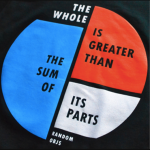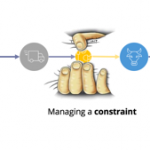The traditional model for control is the hierarchical model, and the reason for its existence is because personal capacity for control is limited, and adding hierarchical levels increases personal capacity of control. On the other hand, if we want to increase the capacity to listen to the customers and the suppliers, in order to satisfy […]
Search Results for: drum buffer rope
The Prerequisite for Project Success: Critical Chain
Today’s post is by Dr. Giovanni Siepe. Every ground breaking solution that is part of the Theory of Constraints springs from challenging limiting assumptions of the situation at hand. It is exactly the same for the Critical Chain algorithm for project management. In the late 1990s, Dr. Eliyahu Goldratt brilliantly tackled a foundational limiting belief […]
The Theory of Constraints – a Whole System Approach
Due to the global success of Dr. Goldratt’s first business novel ‘The Goal’ most people mistakenly think of the Theory of Constraints (TOC) as just a technique for manufacturing. While TOC does produces fast and radical improvements in manufacturing processes, it is in fact a whole system philosophy and method. The thinking that underlies this theory stems from […]
The Throughput Revolution that Beats Cutting Costs
Today’s post is by Dr. Giovanni Siepe. The Theory of Constraints is a management methodology developed by the physicist Dr. Eliyahu Goldratt in the late 1970s. There is little doubt about how radically effective TOC is and that remarkable results have been achieved with it in all kinds of sectors, from healthcare to steel foundries […]
Seeing the Big Picture of Management with the Theory of Constraints
Due to the global success of Dr. Goldratt’s first business novel ‘The Goal’ most people mistakenly think of TOC as just a technique for manufacturing. While TOC does produces fast and radical improvements in manufacturing processes, it is in fact a whole system philosophy and method. The thinking that underlies this theory stems from a worldview […]
Idle Is Good – Resource Optimization Part 2
Our recent post, ‘Resource Optimization? Don’t Make the 100% Efficiency Mistake‘ received thousands of views, hundreds of likes and we are grateful for the many insightful comments received. Here, Dr. Giovanni Siepe takes a further look at resource optimization and why it is essential to always have some excess capacity. Infinite resources only exist in Heaven In our […]
Quantifiable Business Benefits of Systemic Management
Managing complexity and discovering extra capacity through your constraint Managing complexity can create anxiety because complexity suggests a lack of control. Managing an organization around a constraint and managing variation allows control over the entire organization through radically heightened focus. Simply by introducing Drum, Buffer, Rope from the Theory of Constraints, identifying a physical constraint and subordinating to […]
Quality and Kindness: An Uplifting Healthcare Experience
Sometimes it can be useful to look at a system from an individual’s point of view, as the design of the system is what creates our experiences. So this blog post by Intelligent Management co-Founder Angela Montgomery takes an unusually personal slant. “We’ll keep an eye on you for five years,” my surgeon told me. […]
Quantifying the Business Value of Systemic vs Silo Management
A business leader recently asked us about quantifying the business value of a systemic approach to management. This is someone who completely understands that it makes much more sense to work in an integrated and collaborative way rather than within a “functional empire”. The question was, what can we say to people about the quantifiable […]
The Big Picture of Management Through the Theory of Constraints (TOC)
Due to the global success of Dr. Goldratt’s first business novel ‘The Goal’ most people mistakenly think of TOC as just a technique for manufacturing. While TOC does produces fast and radical improvements in manufacturing processes, it is in fact a whole system philosophy and method. The thinking that underlies this theory stems from a worldview […]














